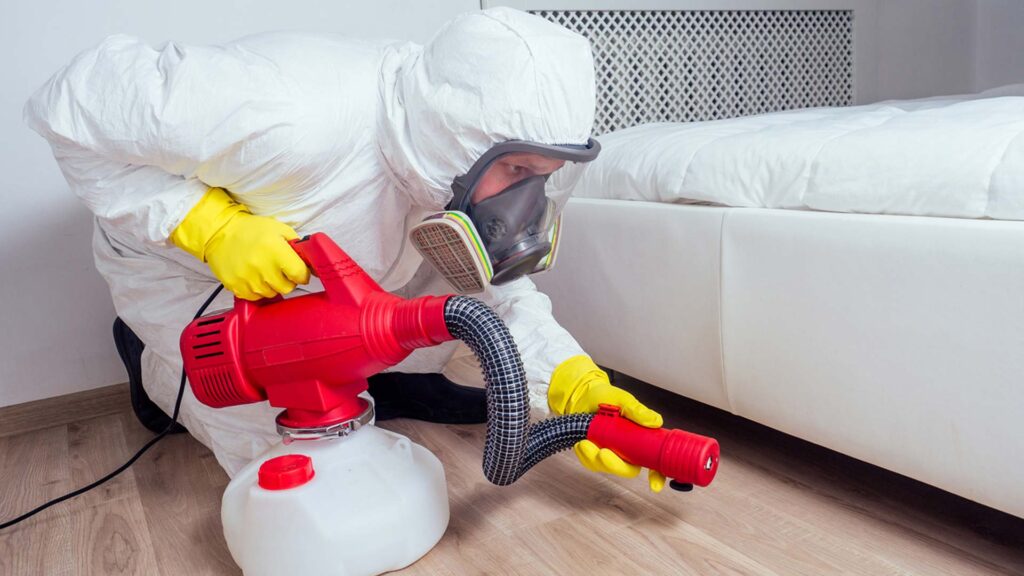
Effective Bed Bug Removal: Strategies for Eradicating Infestations
Bed bugs, those nocturnal nuisances that feed on human blood, can turn your sanctuary into a source of stress and discomfort. Despite their tiny size, these pests can quickly multiply and infest mattresses, furniture, and electronics, causing itchy bites and sleepless nights. However, with the right approach and persistence, you can eliminate bed bugs from your home. In this comprehensive guide, we’ll explore the step-by-step process of bed bug removal, including detection, treatment options, prevention strategies, and the importance of professional assistance.
Detection
Before you can effectively remove bed bugs, you need to confirm their presence. Look for the following signs of infestation:
Bite Marks: Bed bug bites often appear as red, itchy welts on exposed areas of the skin, such as the face, neck, arms, and legs.
Blood Stains: Bed bugs may leave small, reddish-brown stains on bedding, mattresses, and upholstery from their excrement or crushed bodies.
Fecal Spots: Dark spots or smears on bedding, mattresses, or nearby surfaces may indicate bed bug fecal matter.
Live Bugs: While bed bugs are excellent at hiding, you may occasionally spot them crawling on bedding, furniture, or walls.
Treatment Options
Choosing the right treatment method is essential once you’ve confirmed a bed bug infestation. Here are some practical options:
Heat Treatment: Heat treatment involves raising the temperature of infested areas to lethal levels (typically above 120°F) to kill bed bugs and their eggs. This chemical-free method penetrates deep into cracks and crevices where bed bugs hide.
Chemical Treatments: Insecticides, such as pyrethroids or neonicotinoids, may treat infested areas, including cracks, crevices, and furniture. It’s crucial to follow label instructions and safety guidelines when using chemical treatments and to consider seeking professional assistance.
Steam Treatment: High-temperature steam can kill bed bugs and their eggs on contact. Steam treatment is suitable for treating mattresses, furniture, and carpets, as steam can penetrate fabric and upholstery.
Vacuuming and Laundering: Vacuuming infested areas and laundering bedding, clothing, and other washable items at high temperatures can help reduce bed bug populations and remove eggs.
Prevention Strategies
After eliminating bed bugs from your home, preventing future infestations is crucial. Here are some preventive measures:
Regular Inspections: Regularly inspect bedding, furniture, and other potential hiding spots for signs of bed bugs, especially after traveling or hosting guests.
Encase Mattresses and Box Springs: Use bedbug-proof covers to encase mattresses and box springs, making it harder for bed bugs to infest them.
Reduce Clutter: Declutter your home and minimize hiding spots for bed bugs to make detection and treatment more accessible.
Inspect Secondhand Items: Inspect secondhand furniture, clothing, and other items for signs of bed bugs before bringing them into your home.
Professional Assistance
While DIY bed bug removal methods may provide temporary relief, they often fail to eliminate infestations. Professional exterminators have the expertise, experience, and specialized equipment to effectively identify, treat, and prevent bed bug control infestations. Additionally, professional extermination services may offer warranties or guarantees to ensure the eradication of bed bugs and provide peace of mind for homeowners.
Conclusion
In conclusion, bed bug removal requires a systematic approach that includes detection, treatment, prevention, and, in some cases, professional assistance. By following these steps and remaining vigilant, you can successfully eliminate bed bugs from your home and enjoy a restful night’s sleep again. Remember, early detection and prompt action are crucial to preventing bed bugs from becoming a persistent problem.
